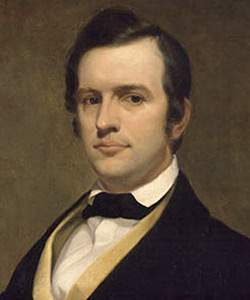Stephen Foster (American National Biography)
Scholarship
The general assessment of Foster has shifted with each generation, reflecting American social views. Around 1900, there was a post-Reconstructionist recasting of his music as "coon songs" and as having elevated and ennobled the crude material of a dark race. In early radio, Foster's songs--which were in the public domain and thus free--enjoyed unprecedented circulation; they were accorded "folksong" status and performed widely in schools. After the Civil Rights movement many schools banned them because of acquired racist connotations. Toward the end of the twentieth century they gained new currency, partly as a result of research into the original meanings and significance of the songs for positive racial relations, partly through their uninterrupted circulation among American country and folk-music musicians, partly because of worldwide interest in their idyllic imagery and beautiful melodies. Foster's songs remain among the best known American music throughout the world, having been recorded by ethnomusicologists in the most difficult to access regions of China along the Tibetan border, taught by black South Africans in their schools under Apartheid, used as emblematic melodies in the cartoon, film, and television industries, and universally taught to Japanese school children since the 1880s. They represent the United States to many of the world's peoples.
Deane L. Root, "Foster, Stephen," American National Biography Online, February 2000, http://www.anb.org/articles/18/18-00415.html.


